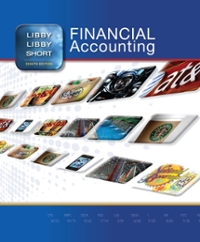G Company is considering the takeover of K Company whereby it will issue 6,400 common shares for all of the outstanding shares of K Company. K Company will become a wholly owned subsidiary of G Company. Prior to the acquisition, G Company had 20,000 shark outstanding, which were trading at $7.60 per share. The following information has been assembled: G Company K Company Carrying Carrying Amount Fair Value Amount Fair Value Current assets $ 47,000 $ 49,500 $ 14,000 $ 11,200 Plant assets (net) 64,0ea 74,eee 34,060 $111,000 $ 38,060 Current liabilities $ 20,400 20,400 5,480 5,400 Long-term debt 17,eee 21,000 2,908 4,100 Common shares 39,000 14,000 Retained earnings 34,608 15,700 $111,eee $ 38,080 equired: a) Prepare G Company's consolidated balance sheet the direct pproach and accounting for the combination with The acquisition method The new entity method G Ompaty sites and Equity (b) Calculate the current ratio and debt-to equity ratio for G Company under both methods. (Round your answers to 2 decimal places.) New Entity Acquisition Metho Method Current ratio Debt-to-equity ratio (c) Prepare G Company's consolidated balance sheet immediately after the combination using the worksheet approach and the acquisition method. (Leave no cells blank . be certain to enter "O" wherever required. Values in the first two columns and last column (the "parent", "subsidiary" and "consolidated" balances) that are to be deducted should be indicated with a minus sign. he all values in the "Entry" columns should be entered as positive values. For accounts where multiple adjusting entries are required, combine all debit entries into one amount and enter this amount in the debit column of the worksheet. Similarly, combine all credit entries into one amount and enter this am ount in the credit column of the worksheet. Omit $ sign in your response.) Consolidated Financial Statement Working Paper G Company Consolidated Balance Sheet Itries O Company X Company Current assets Plant assets (net) Goodwill Investment in x Company logaleition differential Current liabilities Long-term debt common shares Retained earnings







